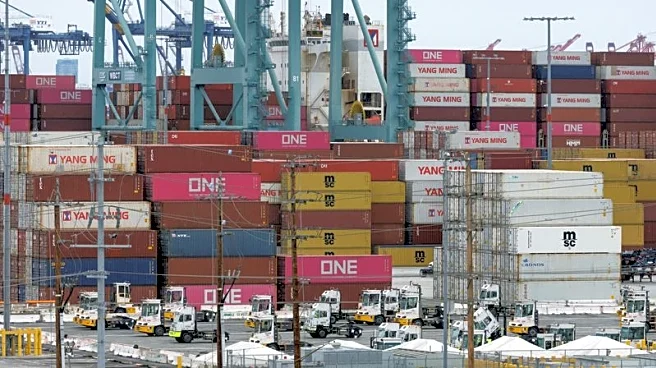What's Happening?
Southeast Asia is set to significantly increase its onshore wind capacity, reaching 26 gigawatts (GW) by 2030, according to a new analysis by Rystad Energy. This marks a substantial rise from the 6.5 GW capacity projected for 2024. The growth is attributed to short-term policy initiatives, including auctions, project awards, and attractive feed-in tariffs (FITs), as well as the increasing acceptance of mainland Chinese wind turbines. Vietnam is currently the largest market in the region, despite policy-driven fluctuations, followed by the Philippines and Thailand. Laos has recently entered the market with the commissioning of Southeast Asia's largest wind project, aimed at exporting power to Vietnam.
Why It's Important?
The expansion of onshore wind capacity in Southeast Asia is crucial for the region's renewable energy targets. With mature technology, reduced equipment costs, and improved performance, onshore wind is becoming a competitive option for renewable energy. The development of this sector is expected to contribute significantly to the region's energy transition, reducing reliance on fossil fuels and enhancing energy security. Countries like Laos, Cambodia, and potentially Indonesia have the opportunity to learn from the experiences of Vietnam, Thailand, and the Philippines, which have seen rapid project rollouts followed by periods of stagnation due to policy discontinuity.
What's Next?
The long-term success of onshore wind in Southeast Asia will depend on consistent government policies, stronger grid integration, and the establishment of local supply chains. Continued government support and industry collaboration are essential to building a resilient wind market. This will ensure that wind energy becomes a key component of the region's renewable energy transition, contributing to sustainable development and environmental goals.
Beyond the Headlines
The development of onshore wind capacity in Southeast Asia also presents opportunities for economic growth and job creation in the renewable energy sector. It highlights the importance of policy stability and infrastructure development in achieving energy transition goals. The region's experience could serve as a model for other developing areas looking to expand their renewable energy capabilities.












